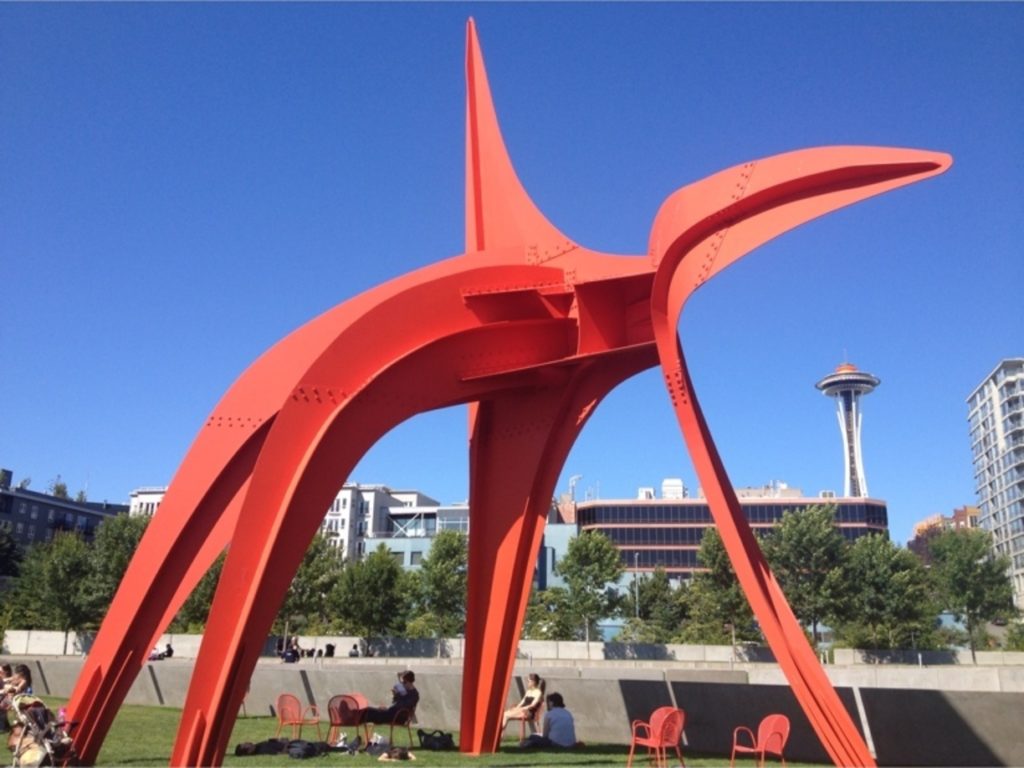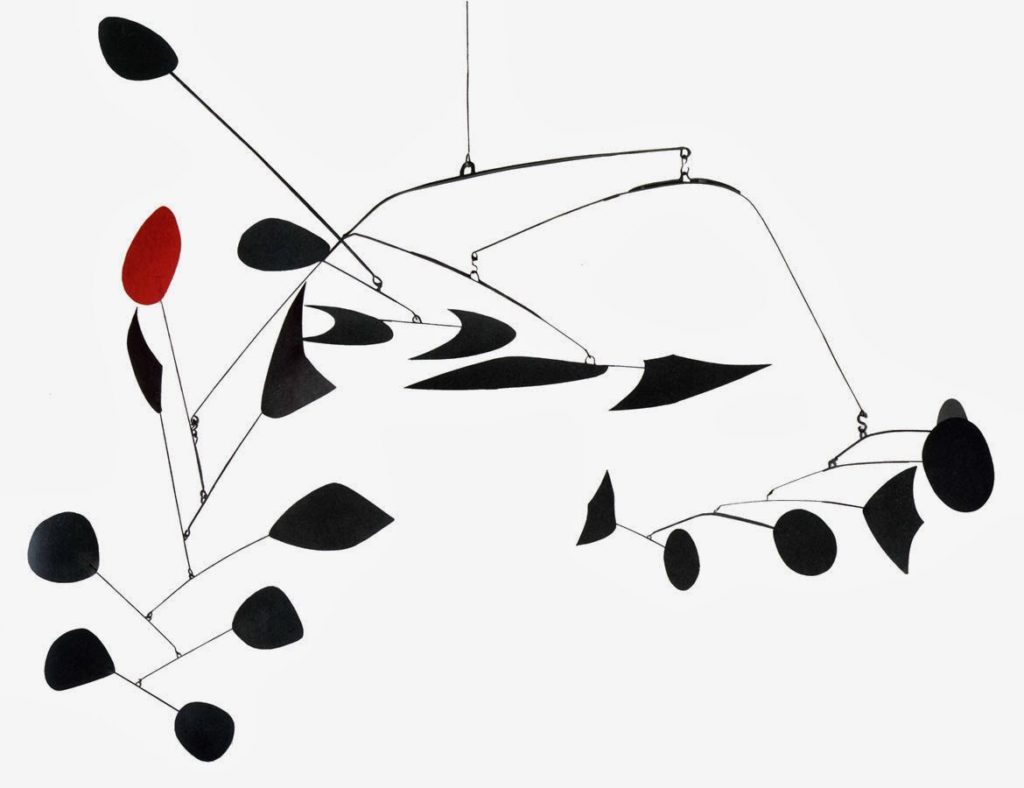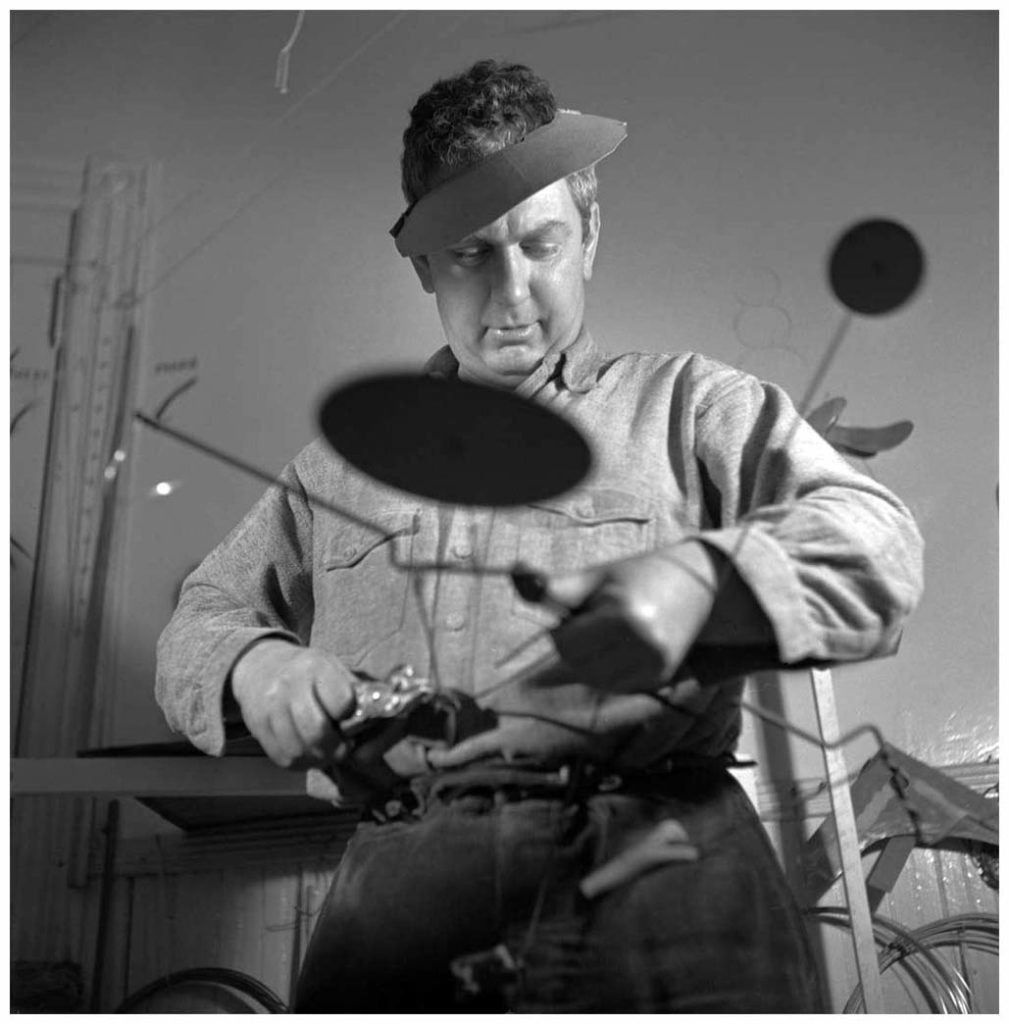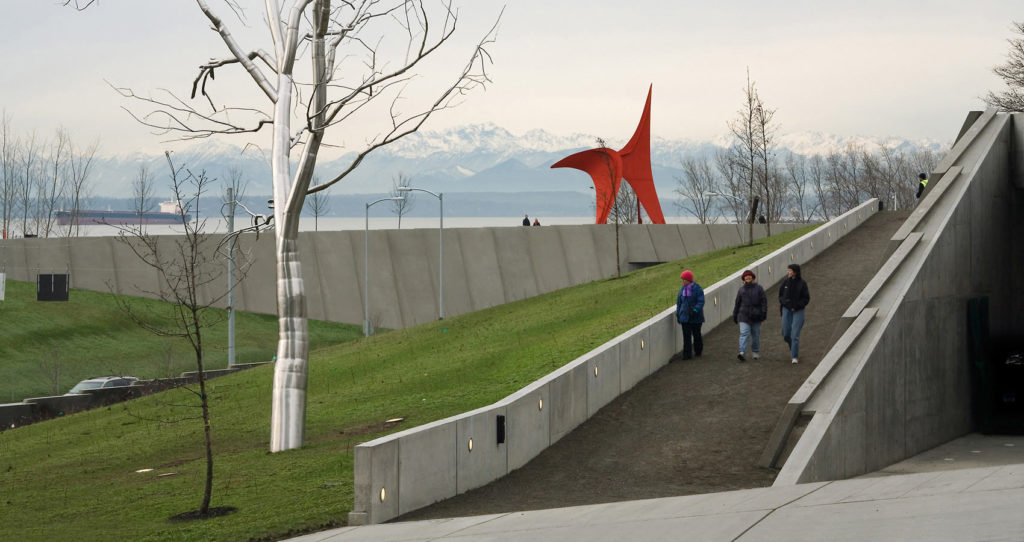Masterpiece Story: Portrait of Madeleine by Marie-Guillemine Benoist
What is the message behind Marie-Guillemine Benoist’s Portrait of Madeleine? The history and tradition behind this 1800 painting might explain...
Jimena Escoto 16 February 2025
American sculptor, Alexander Calder, most famous for his kinetic moving, suspended mobile sculptures, also created a number of massive stationary works known as “stabiles”. One such sculpture is the Eagle. It is the centerpiece of the Olympic Sculpture Park located in Seattle, WA, USA. At 12 meters tall (38 feet), it is the antithesis of the delicate, hanging mobiles, and provides a unique and powerful presence in the park.

Alexander Calder (1898–1976) a third-generation sculptor was born in Pennsylvania. Before heading to the Art Student League in New York in the 1920s, he studied mechanical engineering. His background in engineering clearly influenced his work. He spent much of his early art career in Paris garnering exposure to abstract art, Surrealism, Dada, and artists such as Joan Miró and Piet Mondrian. It was his fellow artist, Marcel Duchamp, who gave the name “mobiles” to Calder’s iconic suspended, hanging sculptures.

A classic example of a Calder mobile is Arc of Petals (1941). Flat pieces of hand-sculpted aluminum are connected by wires with petals and leaves budding along the spine. One leaf is left unpainted to expose the raw aluminum material. The pieces are set in motion by air, emphasizing natural movement, along with a sense of playfulness and grace. These aspects are contrasted strongly by the monumental stabiles.

In the 1950s, Calder began creating stabiles. Gigantic, heavy, earthy, and deeply symbolic of urbanism, they are the polar opposite of the light, ethereal, choreographed composition of mobiles. Eagle was created in 1971. It was owned by the Fort Worth National Bank and housed in front of their headquarters in Texas.
Eagle weighs over 6 tons. The red-painted steel is an abstract marvel. Its curves and spikes resemble origami. And it looks almost aeroplane-like with its rivets and 10-meter wingspan—hearkening to Seattle’s aviation history. Situated in the downtown area, the Olympic Sculpture Park is a 6-acre site designed for the Seattle Art Museum. An urban park in a former industrial area compiling art, architecture, nature, and landscapes. Eagle was purchased by Seattle Art Museum in 2003 at a sum of $10 million. Located outside, the sculpture requires maintenance not needed in museums. Birds cause frequent damage and gardeners are required to use scissors to tend to the grass around it.

Eagles are a prominent birds in Washington State. The towering sculpture holds a specific location in this urban landscape. To one side are the high rises of downtown, and to the other, the Olympic Mountain Range and waters of the Puget Sound. As an artist, Alexander Calder was seen as down-to-earth and even described as jovial by his contemporaries. His work engages the themes of urbanism and nature. Sandwiching Eagle between the various landscapes plays well into these sensibilities and designs.
DailyArt Magazine needs your support. Every contribution, however big or small, is very valuable for our future. Thanks to it, we will be able to sustain and grow the Magazine. Thank you for your help!